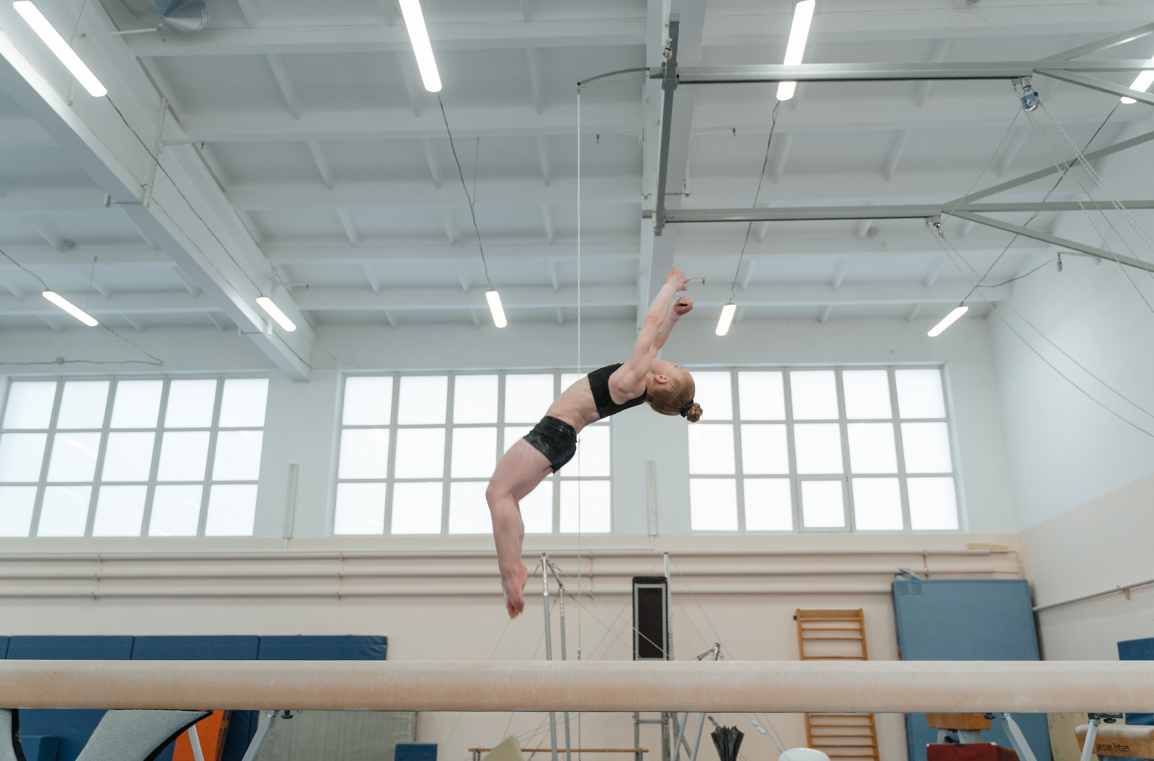Introduction
When it comes to choosing the right gymnastics equipment for your kids, understanding the nuances between gymnastics bars and balance beams is crucial. Both pieces of equipment can play a pivotal role in developing a young gymnast's skills, but they cater to different aspects of physical and cognitive growth. This guide will explore their differences on this gymnastics bars vs. balance beams debate, helping you get some basic knowledge about them to make an informed decision for your budding gymnasts.
What are Gymnastics Bars and their Benefits ?
Gymnastics bars for kids come in various designs, including adjustable, freestanding, and wall-mounted models, each offering unique benefits. Regular practice on gymnastics bars can build significant strength in the upper body and core, helping the child develop the physical ability to perform lifts and holds. Additionally, as children swing and rotate around the bars, they naturally enhance their flexibility and agility. Moreover, mastering routines on gymnastics bars requires and fosters a high level of concentration, which simultaneously boosts self-confidence as children achieve new skills. Using gymnastics bars to exercise can be an excellent way for children to relieve stress, with the focused practice helping in emotional management.
What are Balance Beams and Their Benefits?
A balance beam for kids is a narrow beam on which children can walk, jump, and perform various gymnastic moves. Navigating the narrow surface of a balance beam is excellent for developing a child’s balance and coordination, crucial for many sports and everyday activities. Besides, the core stabilization required to stay upright on a balance beam also helps in improving posture, an essential aspect of gymnastic and general bodily health. Furthermore, completing increasingly difficult maneuvers on the balance beam can also significantly build children’s confidence, which could empower them to be ambitious and take on new challenges in life.
Gymnastics Bars vs. Balance Beams: A Comparative Evaluation
Faced with a decision between gymnastic bars and balance beams, there are many factors to be considered. Seeing that the decision is being made with kids in mind, factors such as suitability for beginners, appropriate age and skill levels, safety considerations and the ideal scenarios for the use of each equipment have to come into play.
Suitability for Beginners and Learning Curves
Gymnastics bars and balance beams offer different challenges, which can affect their suitability for beginners. Gymnastics bars require significant upper-body strength, coordination, and confidence. The learning curve on bars can be steep, as mastering basic grips or other movements may precede learning actual routines.
In contrast, balance beams may appear less intimidating for teaching beginners the fundamentals of balance and precision. The skills developed on beams—such as simple walks and balance maneuvers—are incrementally progressive, making it easier for beginners to gain confidence and advance at a comfortable pace.
Safety Features and Considerations
Safety is always paramount, irrespective of the gymnastic equipment. Both gymnastics bars and balance beams require safety mats and proper installation to prevent injuries. For gymnastics bars, additional safety features like high-quality grips and adjustable height settings are important to accommodate different skill levels and to ensure stability.
The considerations are different for balance beams, the beam should be low enough to the ground for beginners, with progressive height adjustments available as the gymnast’s skill and confidence grow. Regular maintenance checks to ensure the equipment is secure and in good condition are crucial for both types of equipment.
Recommendations Based on Age Suitability and Skill Level Appropriateness
Different age groups and skill levels require different features in gymnastics equipment:
- Young Beginners: For children aged 3-5, lightweight foam balance beams or low, stable wooden beams are ideal. For bars, small, adjustable horizontal bars that can be set at a low height are best.
- Intermediate Gymnasts: Children who have some experience can use higher beams with a solid wood construction and gymnastics bars that offer intermediate height settings and more substantial weight limits.
- Advanced or Competitive Gymnasts: Older children or those preparing for competition should opt for high-performance beams that mimic competition standards and professional-grade gymnastics bars that can withstand more intense use and higher stresses.
Conclusion
This guide has detailed the distinct advantages and considerations of gymnastics bars and balance beams to aid in selecting the right equipment for your child. Gymnastics bars excel in building upper body strength and enhancing concentration, while balance beams are key for developing balance and precision. It is essential to consider your child's developmental needs, their skill level, and the safety features of each equipment when making a decision.

